
views
m
{\displaystyle \mathrm {m} }
and
m
m
{\displaystyle \mathrm {mm} }
) are commonly used metric measurements for length. The metric system is a decimal based system of measurement used by most countries across the world.[1]
X
Research source
The metric system is based on multiples of 10, so you can convert metres to millimetres and vice versa fairly quickly by multiplying and dividing.
Converting Metres to Millimetres
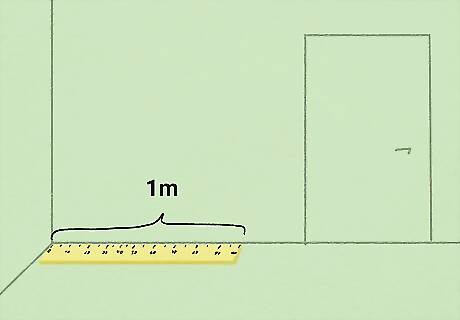
Find the number of whole metres you need to convert to millimetres. If this measurement is not given to you, you will need to measure using a metre stick or tape measure. The length of one metre stick is equal to 1 metre. A metre stick is NOT the same as a yardstick. There are 3 feet in a yard, but there are about 3.28 feet in one metre. You will know a measurement is in metres because it will be labeled m {\displaystyle \mathrm {m} } {\displaystyle \mathrm {m} }. For example, if the length of a floor is 4 metre sticks long, it is 4 m {\displaystyle \mathrm {4\ m} } {\displaystyle \mathrm {4\ m} } long.
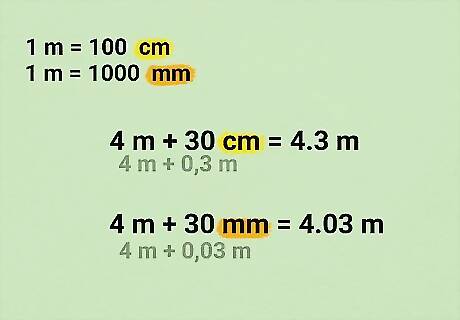
Find the number of partial metres you need to convert to millimetres. Often you will see metres stated in decimals. These means you have a partial metre to convert. If you are measuring, use the centimetre ( c m {\displaystyle \mathrm {cm} } {\displaystyle \mathrm {cm} }) or millimetre ( m m {\displaystyle \mathrm {mm} } {\displaystyle \mathrm {mm} }) units on the metre stick or tape measure. For example, if you measure something that is 4 metres long, plus 30 centimetres, it is 4.3 metres long, because there are 100 centimetres in 1 metre. If you measure something that is 4 metres long, plus 30 millimetres, it is 4.03 metres long, because there are 1000 millimetres in a metre.
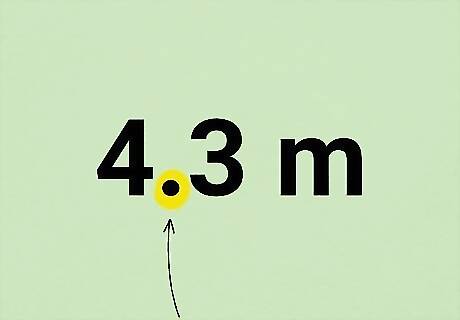
Write the number of metres, and place your pencil on the decimal point. To convert metres to millimetres you need to multiply. Since the metric system is based on multiples of ten, the easiest way to do this is by moving the decimal point to the right. For example, if you are converting 4.3 m {\displaystyle \mathrm {4.3\ m} } {\displaystyle \mathrm {4.3\ m} }, write 4.3 {\displaystyle \mathrm {4.3} } {\displaystyle \mathrm {4.3} } and place your pencil on the decimal point.
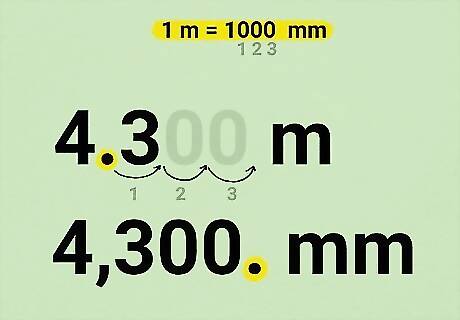
Move your pencil three places to the right. Since there are 1000 millimetres per metre, you need to multiply by 1000 to convert from metres to millimetres. For example, if your floor is 4.3 m {\displaystyle \mathrm {4.3\ m} } {\displaystyle \mathrm {4.3\ m} } long, you would move your pencil three decimal places to the right, adding two zeros to the number. This gives you 4 300 m m {\displaystyle \mathrm {4\,300\ mm} } {\displaystyle \mathrm {4\,300\ mm} }. You could also use a calculator or use the standard multiplication algorithm to calculate 4.3 × 1000 {\displaystyle \mathrm {4.3\times 1000} } {\displaystyle \mathrm {4.3\times 1000} }.
Converting Millimetres to Metres
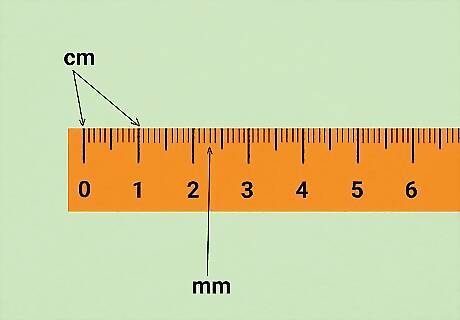
Find the number of millimetres you need to convert to metres. If this measurement is not given to you, you will need to measure using a ruler. On a standard American ruler, millimetres can be measured with the smallest lines on the metric ( c m {\displaystyle \mathrm {cm} } {\displaystyle \mathrm {cm} }) side. Make sure you measure millimetres (small lines) and not centimetres (numbered lines). You will know a measurement is in millimetres because it will be labeled m m {\displaystyle \mathrm {mm} } {\displaystyle \mathrm {mm} }. For example, the length of a pencil might be 155 m m {\displaystyle \mathrm {155\ mm} } {\displaystyle \mathrm {155\ mm} } long.
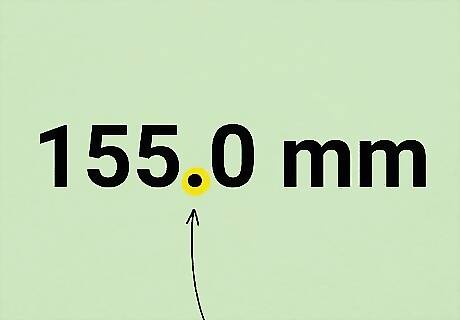
Write the number of millimetres, adding a decimal to the right of the last digit. Place your pencil on the decimal point. To convert millimetres to metres, you need to divide. Since the metric system is based on multiples of ten, the easiest way to do this is by moving the decimal point to the left. For example, if you are converting 155 m m {\displaystyle \mathrm {155\ mm} } {\displaystyle \mathrm {155\ mm} }, write 155.0 {\displaystyle \mathrm {155.0} } {\displaystyle \mathrm {155.0} } and place your pencil on the decimal point.

Move your pencil three places to the left. Since there are 1000 millimetres per metre, you need to divide by 1000 to convert from millimetres to metres. For example, if your pencil is 155.0 m m {\displaystyle \mathrm {155.0\ mm} } {\displaystyle \mathrm {155.0\ mm} } long, you would move your pencil three decimal places to the left. This gives you .155 m {\displaystyle \mathrm {.155\ m} } {\displaystyle \mathrm {.155\ m} }. You could also use a calculator or use the standard division algorithm to calculate 155 ÷ 1000 {\displaystyle \mathrm {155\div 1000} } {\displaystyle \mathrm {155\div 1000} }.










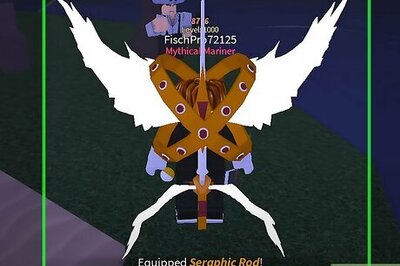




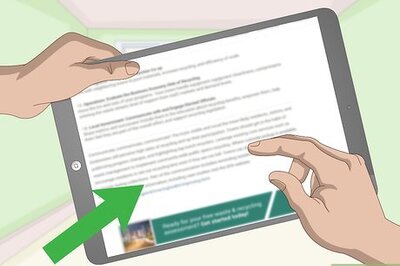
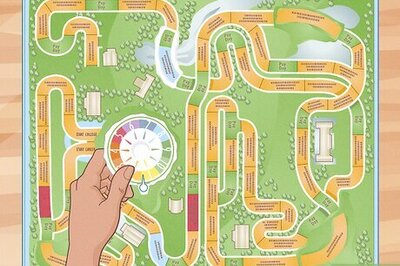

Comments
0 comment